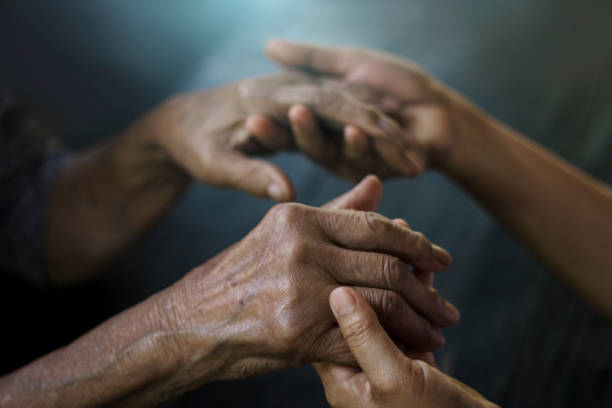Many Reasons Bring People To Hospice
Hospice care is a specialized form of medical care for individuals who are experiencing a terminal illness. Hospices provide comfort, dignity, and support to those who are nearing the end of their lives. While the focus of hospice care is on providing patients with quality of life during their final days, it does involve some diagnostic work as well.
Cancer and Alzheimer’s are two of the most common diseases seen in hospice care, with Alzheimer’s being the sixth leading cause of death in the United States. It is estimated that one out of every three people who enter hospice care have either cancer or Alzheimer’s.

Why These Two?
Unfortunately, both illnesses are on the rise due largely to aging populations and improved diagnosis methods for these conditions. Cancer incidence rates increase as people age, with a higher prevalence among those aged 65 and older. Similarly, Alzheimer’s disease affects approximately 5 million Americans over the age of 65—with an estimated 10% increase each year.
The severity and progression of both cancer and Alzheimer’s can be difficult to predict; symptoms vary greatly from case to case. Hospice care offers specialized, end-of-life medical support and comfort for those living with these chronic illnesses.
How Does Hospice Help?
Hospice care aims to improve the quality of life for individuals with terminal conditions through palliative treatments, such as pain management and symptom control, emotional or spiritual counseling, or social support services. The hospice team can also provide physical and psychological assistance to family members throughout the course of their loved one’s illness.
Through its holistic approach to treating terminally ill patients and their families, hospice care offers dignity and respect at a time when it is needed most. It provides invaluable resources in helping manage the often complex needs of those living with cancer or Alzheimer’s disease—helping to make the end-of-life journey as comfortable and peaceful as possible.


How Bad Does It Have To Be?
The decision to recommend hospice care for a person who is diagnosed with cancer or Alzheimer’s disease can be an emotionally difficult one. Unfortunately, these diseases are not curable and, in most cases, will eventually lead to death. Hospice care is designed for individuals who have been given a terminal diagnosis and are experiencing a decline in their health due to the progression of their illness. While it is important to consider the quality of life when making this decision, determining when bad enough has become too much requires careful consideration by family members and healthcare professionals.
When considering hospice care for someone with cancer or Alzheimer’s disease, there are several factors that need to be taken into account. The overall prognosis affects the decision as well as how far the illness has progressed. It is also necessary to consider how well a person’s lifestyle can be sustained despite the decline in their health and if they are still able to benefit from treatments that may make them more comfortable. Additionally, the availability of family support should also be taken into account when deciding whether or not hospice care is right for someone with cancer or Alzheimer’s disease.
Ultimately, it is important to remember that hospice care is meant to provide comfort and dignity during an individual’s last days of life. Making this decision can be complicated as loved ones attempt to balance quality of life with what is best for the patient. As such, it is important for family members and healthcare providers to work together when considering hospice care for someone with a terminal illness. This will ensure that the patient is able to receive the best care possible and experience the most comfort during their last days.
What Are Some Other Diagnoses?
While cancer and Alzheimer’s are two of the most commonly seen diagnoses in hospice, there are many other diseases and conditions that necessitate such specialized care. Here are some more of the most common diagnoses and diseases seen in hospice care:
1. Heart Disease – Heart disease is one of the leading causes of death in hospice patients, with congestive heart failure being particularly common. Symptoms may include chest pain, shortness of breath, fatigue, and swelling in the extremities.
2. COPD (Chronic Obstructive Pulmonary Disease) – COPD is a progressive lung disease that makes it difficult to breathe. Hospice care helps COPD patients manage their symptoms, including coughing, chest tightness, and breathing difficulty.
3. Diabetes – Diabetes is another leading cause of death in hospice care. While many hospice patients with diabetes are able to manage their condition at home for a time, when complications arise or the patient’s condition worsens significantly, end-of-life care can be beneficial.
4. Kidney Disease – End-stage renal disease (ESRD) refers to kidney failure that requires dialysis or a transplant in order to sustain life. Many hospice patients with ESRD are eligible for supportive end-of-life care if they choose not to pursue further medical treatments.
5. Dementia – Dementia is a decline in cognitive functioning that can be caused by many different diseases and conditions. At the end-stage of dementia, hospice care can provide comfort for the patient and support for family members.
6. Stroke – A stroke occurs when there is a blockage or bleeding in the brain resulting from ruptured blood vessels or blocked arteries. Many strokes are disabling, making end-of-life care necessary for those with severe cases who can no longer live independently or care for themselves without assistance.
7. Lung Cancer – Lung cancer is one of the most commonly seen diagnoses in hospice care, along with other forms of cancer. Symptoms of lung cancer can include a persistent cough, weight loss, fatigue, and chest pain.
8. Liver Disease – End-stage liver disease is caused by cirrhosis or another condition that significantly impairs the liver’s ability to function properly. Symptoms may include abdominal pain, jaundice, swelling in the legs or ankles, and confusion.


What Other Options Are There Leading Up To Hospice?
Outside of hospice care, there are many other options for those facing a terminal illness. Depending on the patient’s needs and preferences, families may consider home health care, palliative care, or even residential facilities that provide comfort and support.
Home health care is a great option for those who wish to stay in their own homes while receiving medical treatment. This type of care involves professional nurses and certified aides providing nursing services within the home setting as well as providing assistance with activities of daily living such as bathing, dressing, meal preparation, and more. Home health can provide pain management, wound care, symptom control, and much more to help keep the patient comfortable while they remain at home.
Palliative care is another common option for those facing a terminal illness. This type of care is designed to provide relief from the symptoms and stress of a serious medical condition, while also improving quality of life. Palliative care focuses on providing comfort and support, while managing any pain or symptoms associated with the illness. It can be provided in both inpatient and outpatient settings, depending on what best suits the patient’s needs.
For patients who would benefit from additional support and resources, residential facilities are available as well. These may include nursing homes or assisted living residences that provide around-the-clock care in a safe and comfortable environment. The staff at these facilities will work closely with the patient to ensure they receive proper nutrition, medication management, physical therapy, and other services as needed.
No matter the option chosen, it’s important to remember that each patient’s needs are unique and should be taken into consideration when determining the best course of care. With so many options available, families can take comfort in knowing that they are making an informed decision that is right for their loved one.







